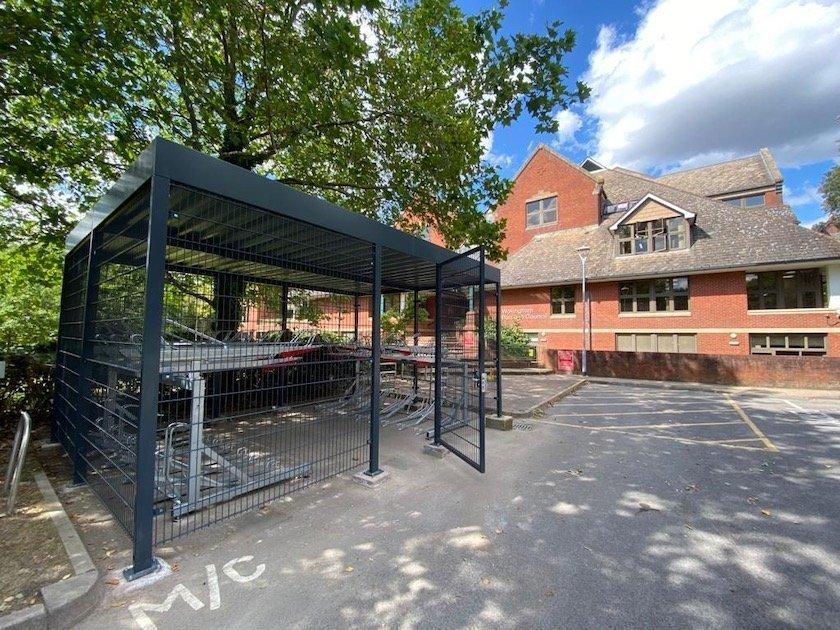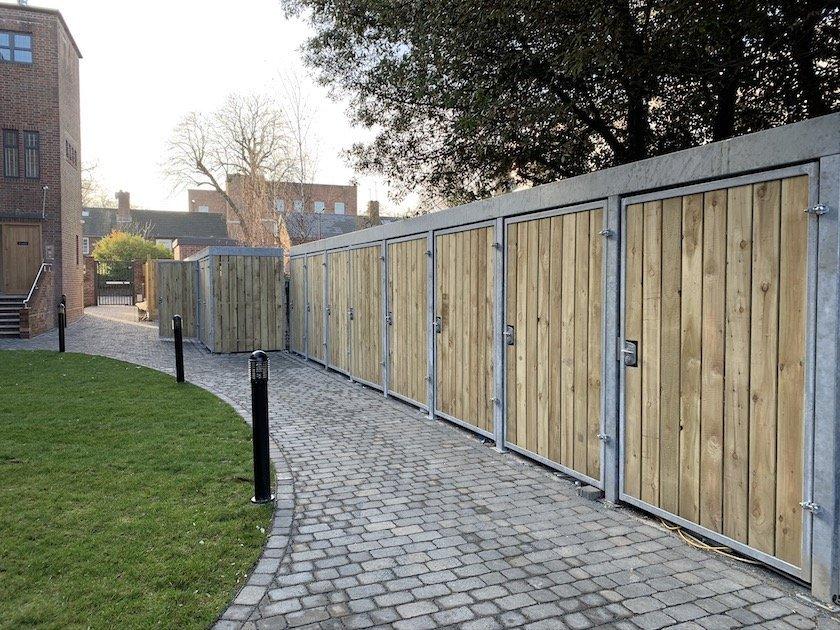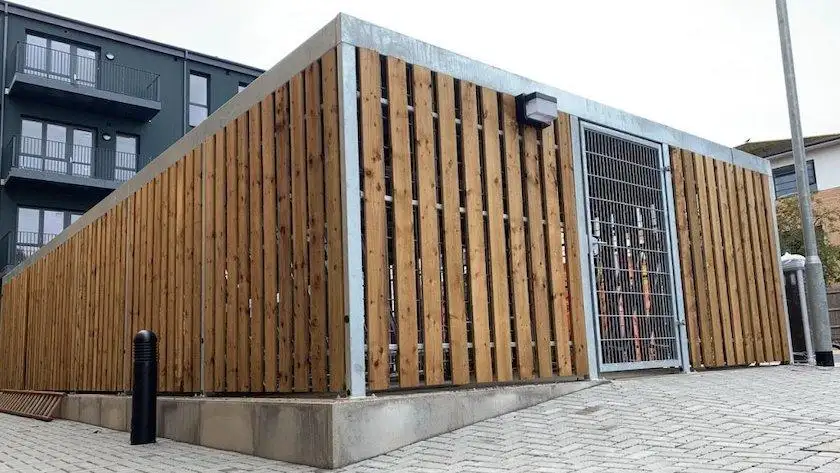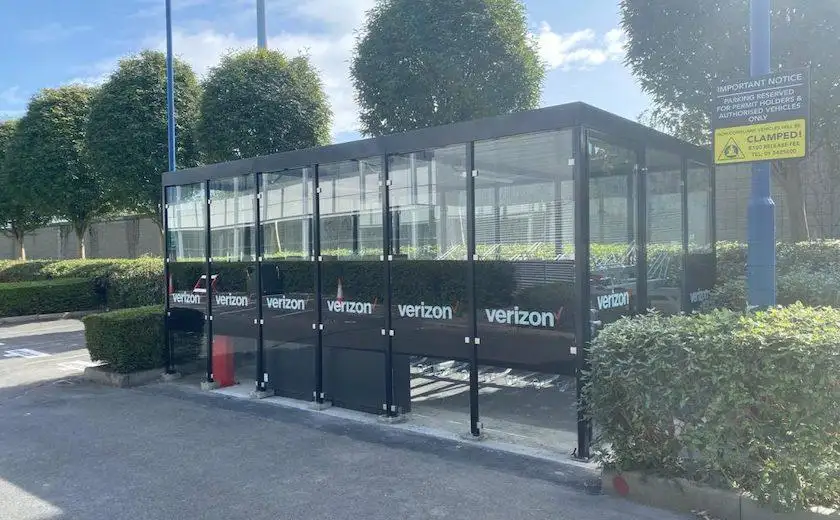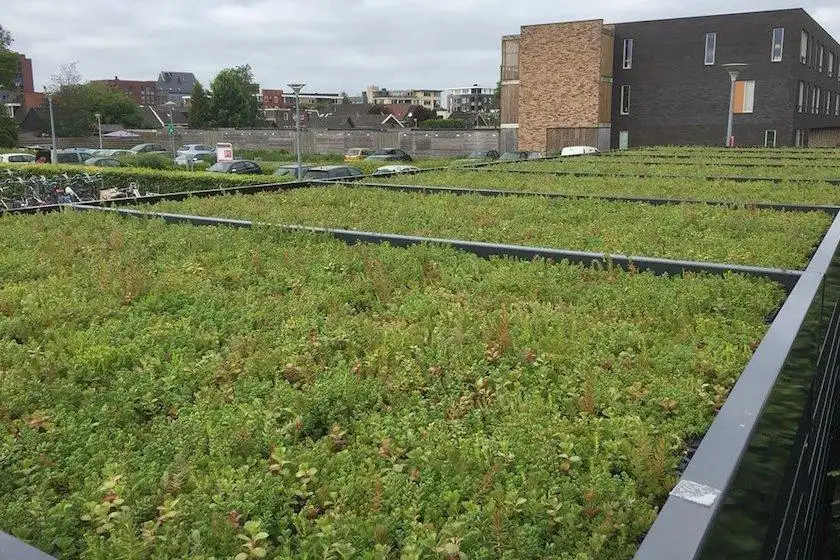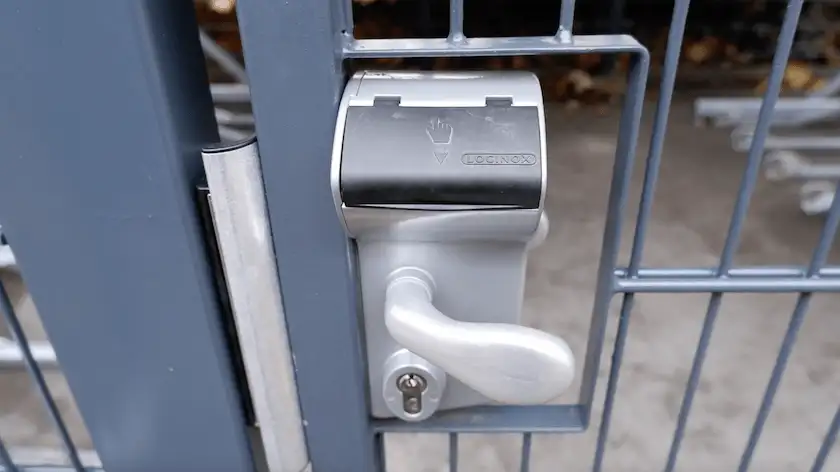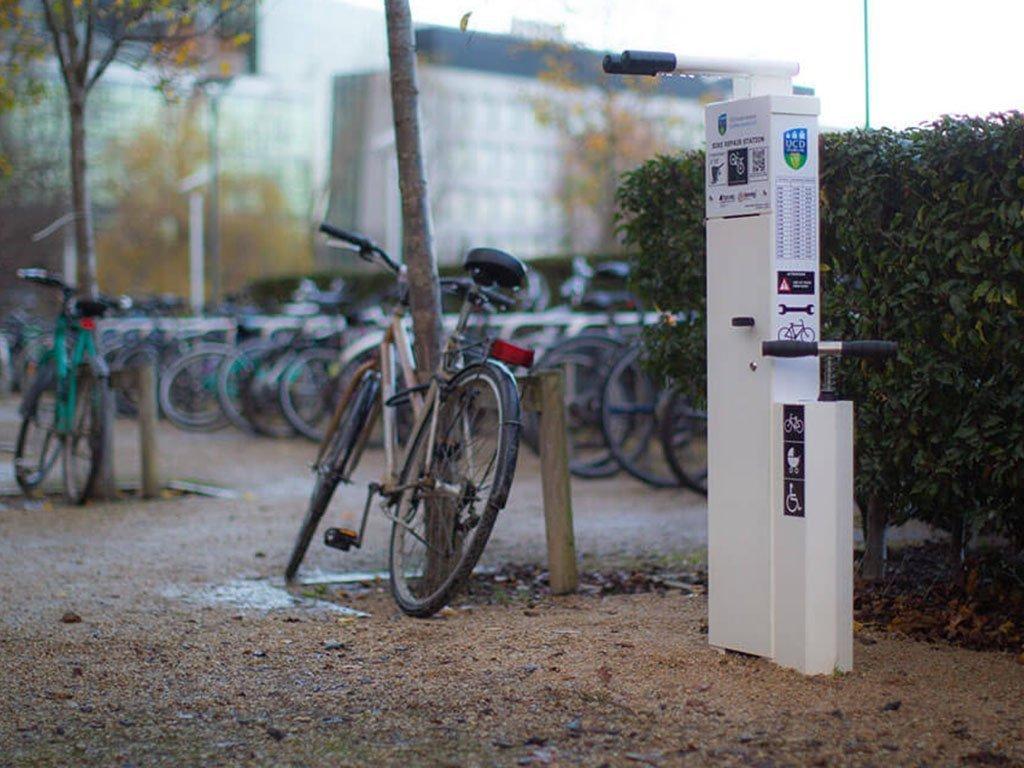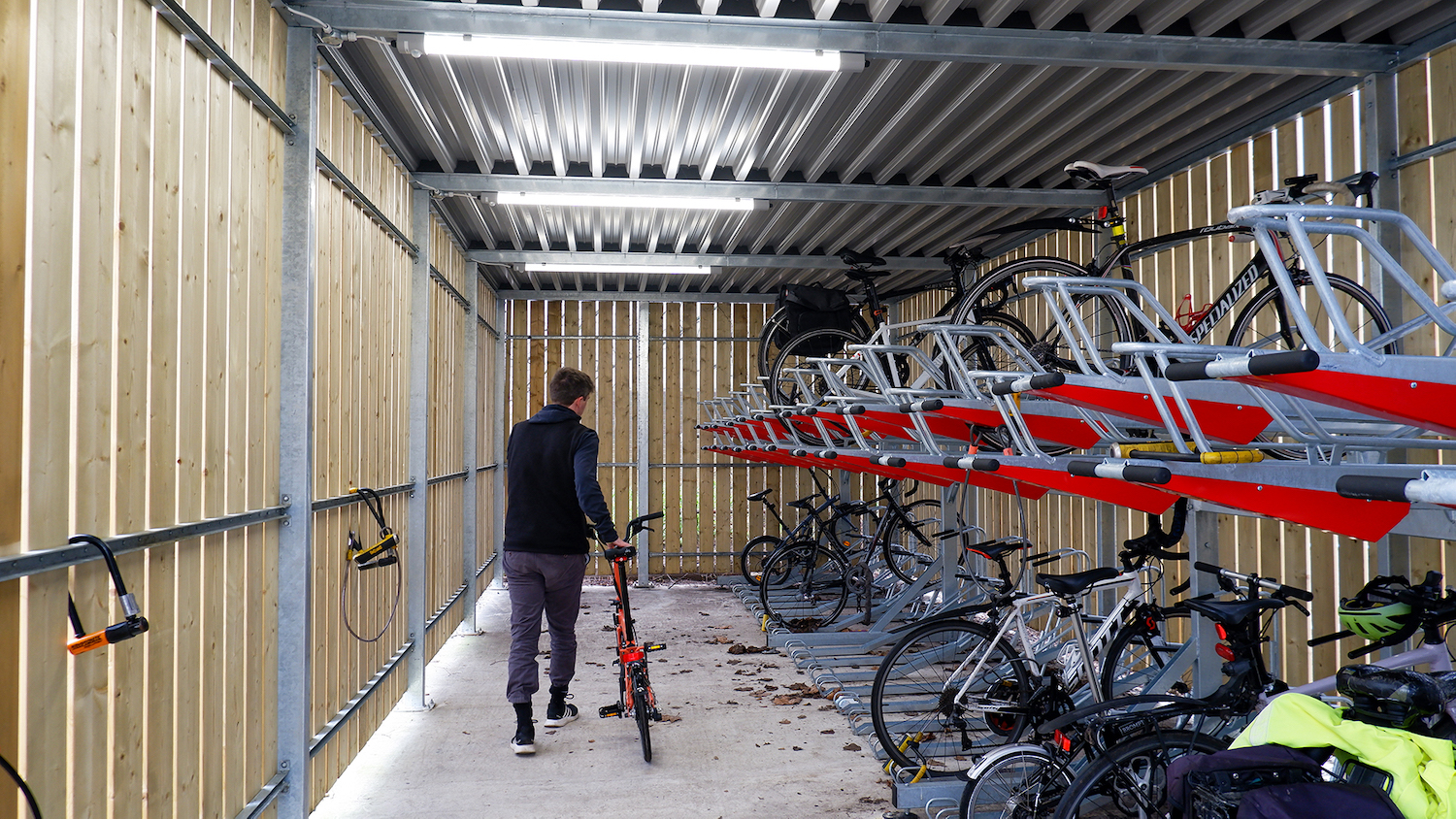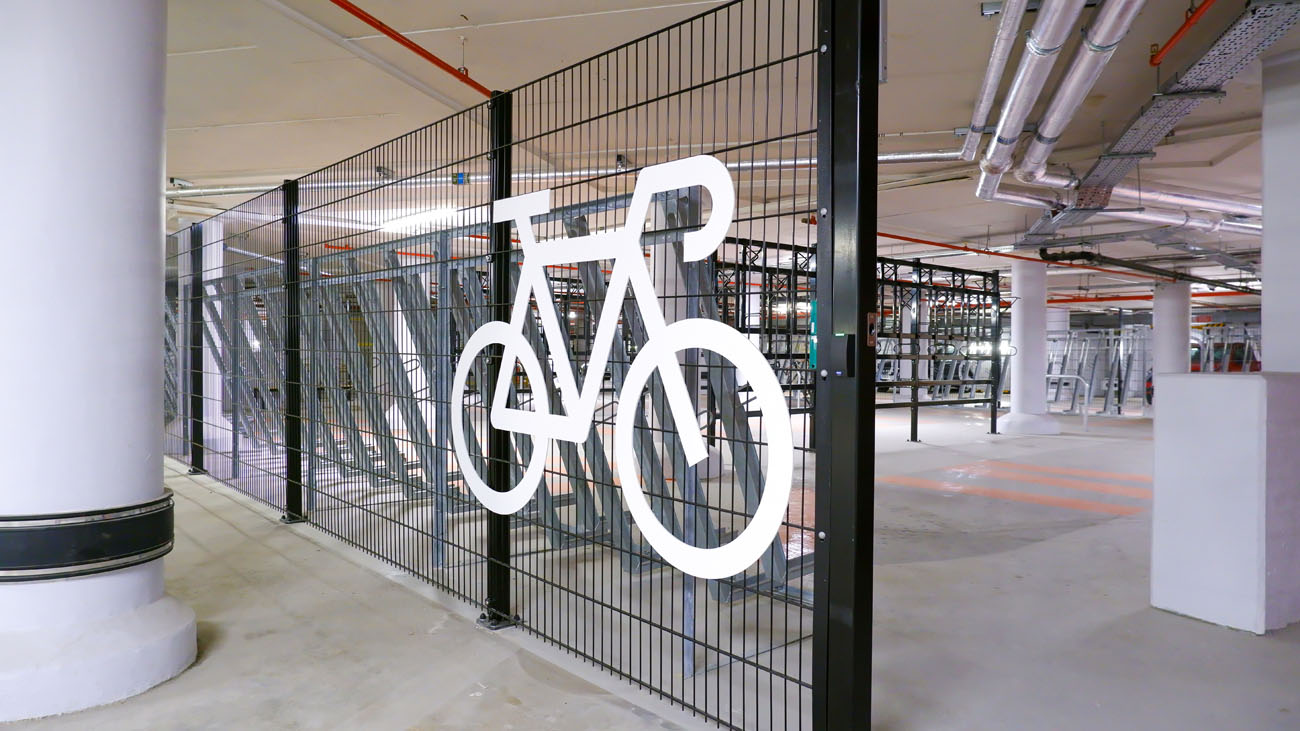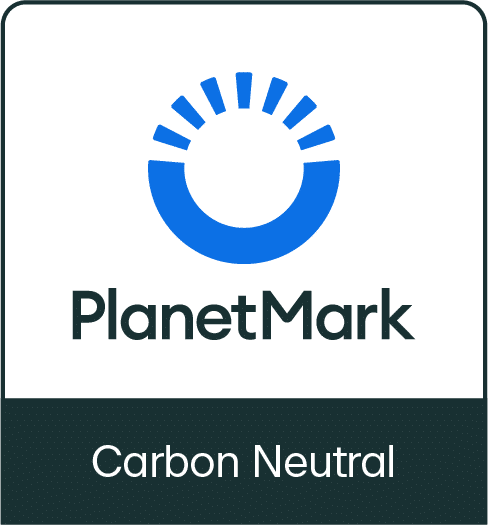Cycle shelters provide cyclists with secure and weatherproof storage for their bikes, promote and encourage more commuters to ride to work, and minimise abandoned and stolen bicycles.
The Turvec Cubic is a cycle shelter that comes in different forms, finishes and sizes. It’s a highly customisable cycle storage option that can accommodate any number of parking spaces.
Here’s a lowdown of the Cubic, its functionality, finishes, and features.
Dimensions
The size of the Cubic is the first thing you need to consider. The height and width of the shelter will dictate what racks can be accommodated. This choice depends on a) the space you have available for the shelter, and b) the number of bike spaces you need to provide.
Generally speaking, two-tier racks increase the number of parking spaces, for example. This will require 2600mm internal clearance, resulting in a total shelter height of 3000mm.
Our standard 2400mm shelter heights, on the other hand, suit semi-vertical racks and other height-friendly cycle racks.
George, Commercial Director at Turvec: “Understanding the function of the Cubic informs our recommendation on size. A Cubic shelter with two-tier racks can provide high density parking spaces. It’s a common choice for larger shelters where maximising capacity is the main requirement.”
